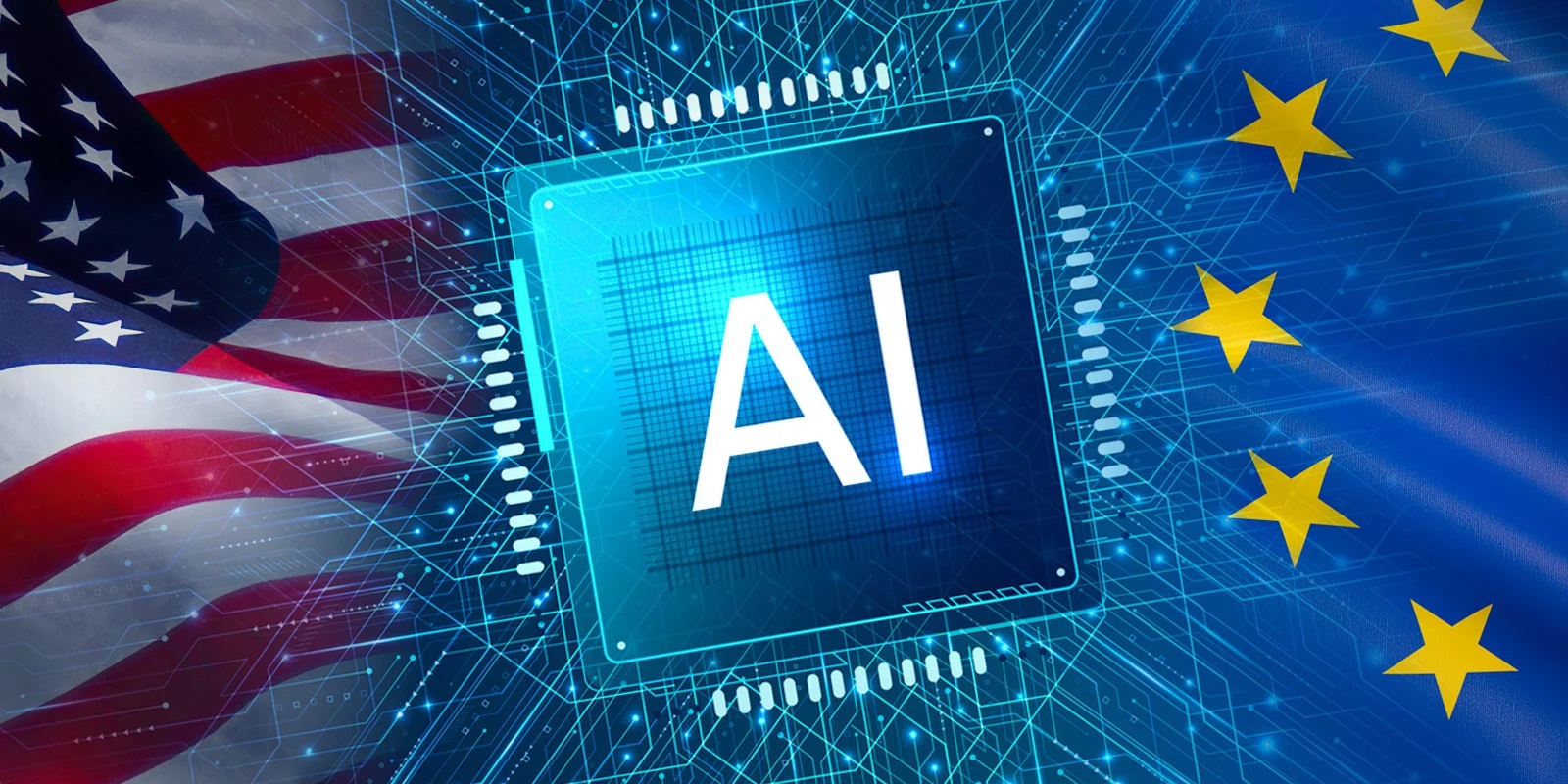- Creating a High-Standard International Academic Exchange Platform
This conference was co-organized by the "HKRIAI Hong Kong Artificial Intelligence Research Institute," the KERUI Research Institute - Young Scholars Forum, the Chinese Academy of Sciences - Institute of Mechanics, the University of Haute-Alsace in France, and other academic institutions. Centered on the theme of "AI Era Trends and the Future of Industries," the conference delved into the profound impact of the integrated development of AI, advanced computer networks, and information processing technologies on the global industrial landscape.
The conference invited numerous experts from diverse academic and industry backgrounds, including Honorary Adjunct Professor Kevin Pereira of the Hong Kong University of Science and Technology, Associate Professor Mujiangshan Wang
from the Shenzhen Institute of Advanced Technology of the Chinese Academy of Sciences, Engineer HaIlin Ma from the Chinese Academy of Sciences, Shanghai Fengxian District CPPCC Member and Vice Chairman of the Hong Kong-Shanghai Youth Association Jiaqi Chen, Deputy Secretary-General of the KERUI Research Institute Jiarui Wu, Secretary-General of the Hong Kong Artificial Intelligence Research Institute Jiabao Zhao, Representative of the United Nations Academic Committee Joyce Chen, and CEO of Nod Research Institute Yingzi Peng, among others. During the event, these experts gathered to share their insights.
Additionally, all papers presented and published at this conference will be submitted to the EI and Elsevier Scopus databases for indexing, further enhancing the international influence of the research findings.

Group photo of experts participating in AINIP 2025
- Three Keynote Speeches: In-Depth Analysis, Reshaping Industries in Progress
During the conference, three experts from academia and the tech industry delivered keynote speeches focusing on polar climate, graph neural networks, and smart energy, respectively. These speeches revealed the pathways for AI technology to be implemented across interdisciplinary and multi-domain scenarios, showcasing the shift from "academic exploration" to "industrial depth."
"The deep integration of physics-guided graph modeling and AI algorithms reshapes the understanding and response strategies for polar climate change."
- Professor Nick Freris
Professor Nick Freris of the University of Science and Technology of China shared his team's latest research results in his keynote speech - a weather forecasting method based on physical knowledge graph modeling. This method combines graph neural networks with recurrent neural networks and uses high-frequency meteorological data from the past five days to achieve accurate weather forecasts from hourly to seven-day levels.
Event Venue
Dr. Nick pointed out that current polar climate prediction faces numerous challenges: traditional physical models are computationally complex and rely on supercomputers, while purely data-driven methods, though efficient, struggle to fully capture the intricate interactions within the system. To address this, his team proposed a "physics-informed graph modeling" approach. By using GNNs to model multi-scale information in atmospheric systems and embedding physical laws (such as mass conservation), the method achieves high-precision, long-term weather predictions with limited computational resources, offering a new pathway for polar climate research.
"Graph neural networks will become the next inflection point for AI."
— Moujiangshan Wang
GNNs are a critical component of AI, excelling in structured data processing, causal reasoning, broad application scenarios, and theoretical research. Professor Moujiangshan Wang from the Chinese Academy of Sciences provided an in-depth analysis of their technical principles, evolutionary paths, and widespread applications across various industries.
Professor Moujiangshan Wang, Shenzhen Institute of Advanced Technology
Chinese Academy of Sciences
Through a series of question-guided explanations, Professor Wang systematically outlined the core mechanisms, design processes, propagation modules, spectral and spatial methods of GNNs, while comparing the strengths and weaknesses of different models. He emphasized that GNNs, as structure-aware models, can effectively capture dependencies in complex relational data, demonstrating immense potential in social networks, recommendation systems, financial risk control, and other fields. Additionally, he offered a forward-looking analysis of GNNs' future development directions—focusing on more efficient sampling strategies, stronger expressive capabilities, and improved generalization. As industries increasingly seek to understand and leverage complex relational data, the application scope of GNNs is expected to expand further.
"AI-powered interdisciplinary collaboration will bring more innovation and breakthroughs to the liquid battery industry."
— Hailin Ma
Liquid batteries, as a key component of next-generation energy storage technology, require a delicate balance between performance and cost. Dr. Hailin Ma, an engineer at the Institute of Mechanics of the Chinese Academy of Sciences, focused on this industry during the conference, discussing how databases and natural observation methods can drive technological advancements in this field.
Dr. Hailin Ma, Engineer at the Institute of Mechanics, Chinese Academy of Sciences
Dr. Ma shared his team's latest research findings with attendees, analyzing applications in 12 major cities or regions and proposing key recommendations, including establishing research communities, optimizing liquid battery lifecycle management, and streamlining production processes. These insights offer new perspectives for the liquid battery field. Given the unique nature of energy storage technology, Dr. Ma believes that AI-powered interdisciplinary collaboration, integrating achievements from fields such as space research and machine learning, can better advance liquid battery technology and applications, providing robust support for the development of smart energy systems.
- Roundtable Forum: Insights into the Future, Smart Living in Symbiosis with AI
During the panel discussion, multiple experts and scholars explored the topic of "AI Applications in Business and Future Trends." Drawing on their research result and practical experience, they shared insightful perspectives from technological evolution, industrial integration, strategic transformation, and other dimensions, highlighting AI's immense potential in enhancing business efficiency, optimizing decision-making processes, and reshaping industry ecosystems.
"AI is profoundly transforming business models and work methods."
— Professor Kevin Pereira
Honorary Adjunct Professor Kevin Pereira of the Hong Kong University of Science and Technology and Director of BLUE AI Consulting noted that AI is a tool for achieving goals and will drive business model transformations while altering work dynamics. He identified healthcare and entertainment as the industries most likely to achieve "leapfrog upgrades" through AI. In healthcare, AI can predict potential health issues through predictive analytics, thereby mitigating risks. In entertainment, AI will significantly lower the barriers to content creation, presenting new opportunities and challenges for creators.
Ms. Jiabao Zhao and Professor Kevin Pereira
"Behind the leap in productivity, we should re-examine the relationship between humans and AI."
—Jiabao Zhao
The ongoing debate about whether AI is replacing human jobs continues to draw widespread attention. Ms. Jiabao Zhao, Secretary-General of the Hong Kong Artificial Intelligence Research Institute, pointed out that while factory automation once widely replaced repetitive manual labor, AI is now gradually permeating and taking over repetitive cognitive tasks. This transformation not only marks a leap in productivity but also prompts humans to reconsider their roles and value in the intelligent era.
Ms. Jiabao Zhao raised a social phenomenon worthy of deep thought: in the past, people trained AI systems through carefully selected data; now, AI actively "pushes" information to humans with the help of recommendation algorithms and dialogue models such as ChatGPT. Although the reversal of this information dissemination mode has improved the efficiency of acquisition, it also hides deep risks - being trapped in an information cocoon invisibly, over-relying on a single source, and thus weakening independent thinking and judgment. Ms. Jiabao Zhao called at the meeting that in today's world where the wave of technology is sweeping the world, we should pay more attention to cultivating and improving our independent thinking and deep thinking ability. She pointed out that in the face of industry changes and social transformation brought about by the rapid development of cutting-edge technologies such as artificial intelligence, only those with clear cognition and independent judgment can truly seize the opportunities of the times, control technological changes, and achieve sustainable development of individuals and society.
"I believe the three key factors for the AI industry are: computing power, algorithms, and data."
— Moujiangshan Wang
When asked about the core elements of future AI development, Professor Moujiangshan Wang identified computing power, algorithms, and data. He also advocated for using synthetic data and domain expert knowledge to optimize AI models. Additionally, he promoted modular context processing (MCP) technology, which connects different databases and knowledge bases to form powerful solutions, thereby maximizing efficiency.
At present, the global AI industry has entered a period of dual acceleration of technological breakthroughs and commercial implementation. While the wave of innovation is sweeping the world, we should also think more about how to make AI truly become the core force driving social progress. AINIP 2025 depicts a clearer intelligent future for us - only by adhering to open collaboration and forward-looking layout can we truly seize the opportunities of the times and unleash the unlimited potential of AI.






